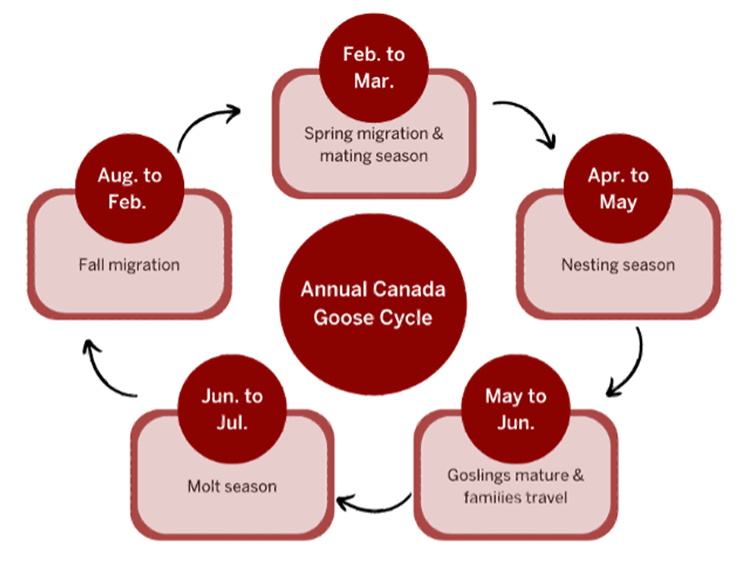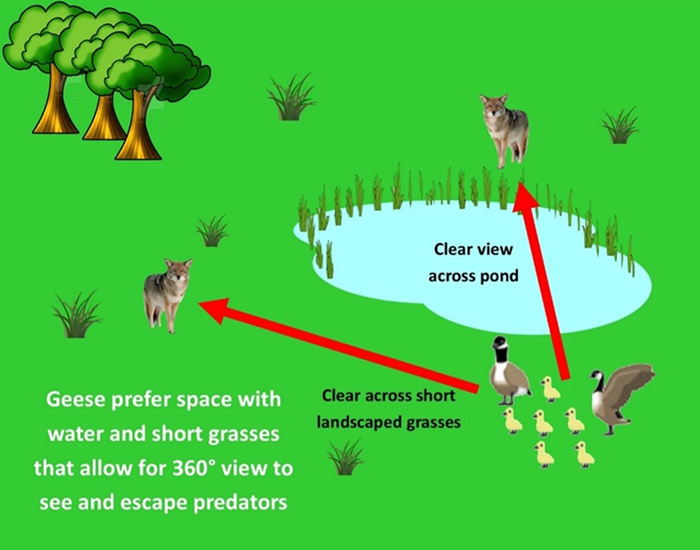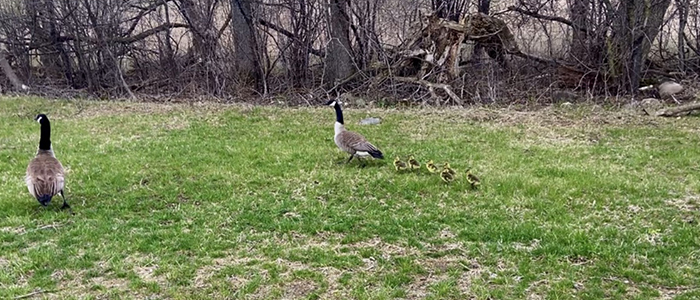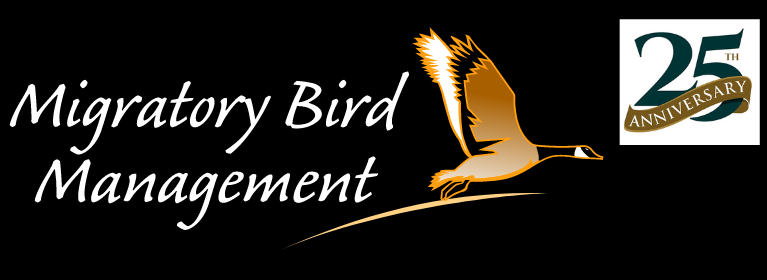Look Out for Increased Geese Activity This Molt Season
May 9, 2023
The late spring and early summer months can be active ones for Canada geese.
Pairs of monogamous geese typically nest in April and May. Once their goslings hatch, the family tends to stay in location until the end of the summer.
However, if the nesting site lacks the resources that goslings need to survive the coming months, the parents and their young will travel in search of a more hospitable environment.
These treks – which can sometimes lead geese up to two miles away from their original nesting site – may culminate on the grounds of commercial or residential properties. Once geese settle, it is hard to extricate them: in addition to guarding their young, the parents molt, which means they are grounded and cannot fly.
If you spot geese eyeing your property as their potential summer home, it’s important to take action before they settle in for the season.

The Ideal Nesting and Molting Sites for Geese
Geese are particularly vulnerable during nesting and molting seasons. Before goslings hatch, the parents are bound to their nesting location and eggs. After goslings hatch, the parents molt and are unable to fly themselves (or their young) away from danger. Therefore, geese prioritize safety and the availability of resources when selecting their home for the spring and summer.

Adults constantly protect their goslings from predators and other threats. This diagram includes some key characteristics geese look for in the location(s) they habitat during nesting and molting seasons.
Most locations geese prefer to nest and molt in share the following characteristics:
Open Sightlines
Avoiding predators is of chief importance to geese when they incubate and raise their young. Because of this, geese select locations with open sightlines so they can easily watch for approaching threats.
Cover
Nesting and molting locations are, ideally, in close proximity to cover. If geese spot predators approaching, they must be able to quickly hide themselves and their eggs or young. Some popular locations that provide both visibility and cover include rooftops and areas close to water.
Water Source
Proximity to water is ideal, but not necessary. In addition to providing cover, water allows goslings to swim and forage after they hatch.
Food Source
Geese must be near food to produce eggs and maintain their energy as they incubate and molt.
Nesting Material Availability
While not a concern during molting season, geese lay their eggs in locations where nesting material is available. Materials include gravel, mulch, goose down, garbage, and grass or other vegetation. Females generally construct the nest while the male guards her. If you spot a single goose loitering in the spring, it is a sign a nest may be nearby.
Walking with Goslings
Geese are precocial, which means goslings can open their eyes, walk on their own, and feed themselves almost immediately after hatching. This makes it easy for goslings to move from away from a nesting location with their parents, if necessary.
Adult geese molt shortly after their goslings are born. When geese shed their flight feathers, they remain grounded and must travel with their young by foot.
Once a family of geese selects a suitable location, they will remain there until the fall migration, if left undisturbed.

A family of geese will cross roads, fields and other terrain to find a better habitat.
Managing the Geese Settlement on Your Property
If you suspect a family of geese has moved onto your property to raise their young and molt, it’s important to act quickly.
Migratory Bird Management’s team of border collies and trained staff are experts at removing geese from commercial and residential properties.

A goose family being walked carefully off property by permitted staff. It is against the law to harm or even touch goslings and geese.
Reach out to schedule a site evaluation or to learn more about how Migratory Bird Management can keep your property goose-free this nesting and molting season.
Contact us today to learn more about our goose control services




 0
0
